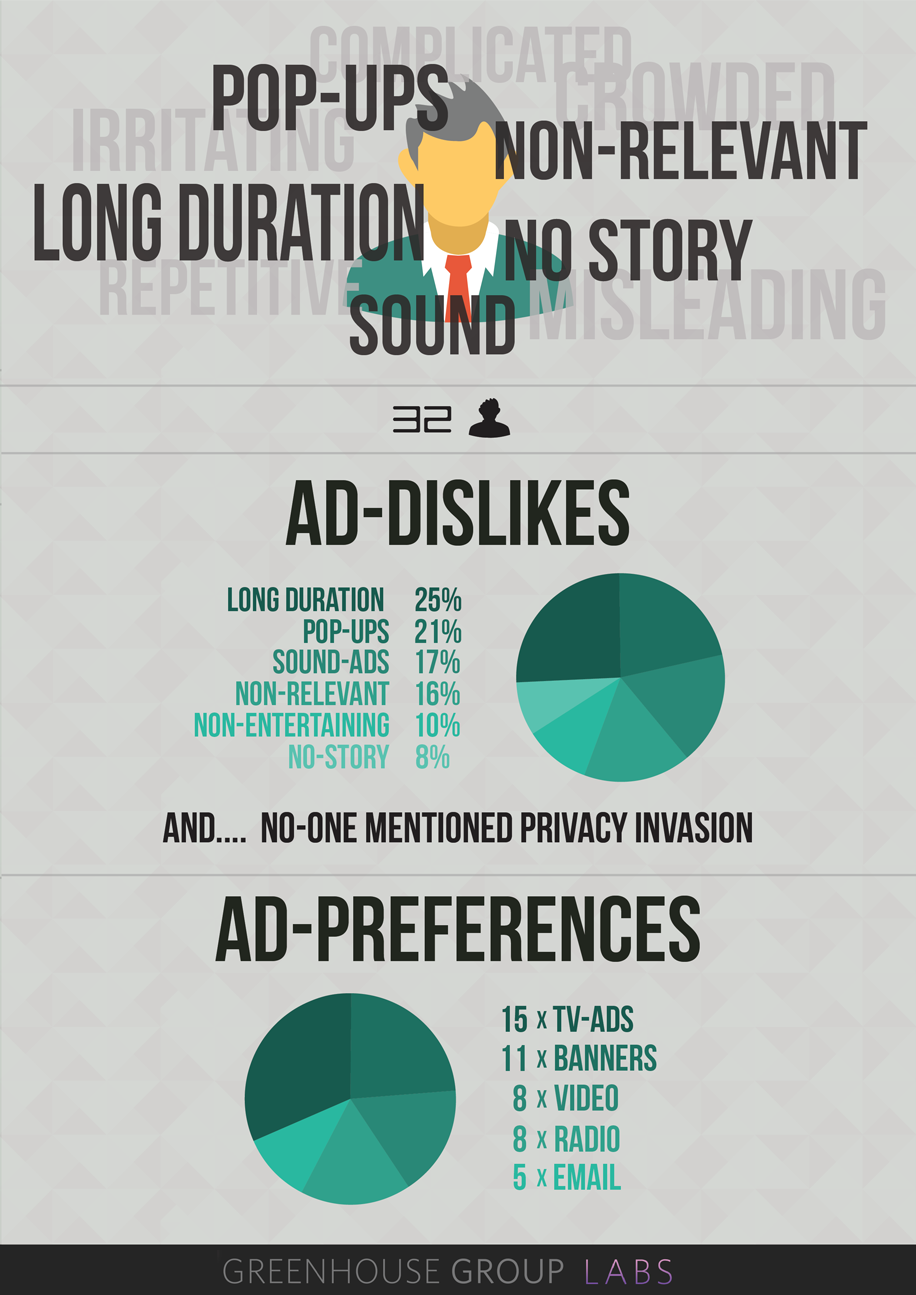AdBlock. The very word sends chills down the spine of the whole digital advertising world. Yet for many consumers, it’s the hero they desperately need. To them, obtrusive digital ads have become a constant annoyance during their regular online activities. Although several ads are actually helpful or entertaining, there are just as many that are too long to watch, too loud or simply irrelevant. The worst intruders are pop-up ads, especially when they’re almost impossible to get rid of.

As you can see, long duration, popping up and unwanted sound are the main reasons people dislike ads. But curiously enough, no one mentions privacy invasion. This will be important later on!
AdBlock allows for an ad-free online experience. But there are some downsides, even for the user. AdBlock often creates empty spaces on the website where ads are intended to be. This can disrupt the whole outlook of the website. In addition, a lack of ads also means that consumers get less information on new products, exclusive deals or relevant services. Information that can help them in their customer journey. Also, it prevents them from being entertained by ads that are actually well thought-out and fun. (And yes, usually only the creators of these ads think this is a shame, but still)
All advertisers and publishers fear a rise in AdBlock-users, yet many stay idle. The cold hard truth is they either change or slowly become obsolete. In 2015, 21.8 billion dollars in ad revenue was lost because of AdBlock. And it’s only getting worse. So is there really no way to have digital ads that are beneficial to both advertiser and user? Of course, there is. The real question is: are digital advertisers willing to innovate to achieve this holy grail? We certainly are!
To turn this thing around, we need to work on three things. First, we have to encourage consumers to disable their ad blocker. Secondly, we need to make sure the ads they see are actually relevant and interesting. Finally, we need to deliver the ads in a way that isn’t obtrusive. Easier said than done. Nevertheless, this change has to happen for advertising to stay afloat.
At GHG Labs, we’re working on a concept that might be able to accomplish all of the things mentioned above. In the past few weeks, we’ve been developing a prototype of the world’s first web-based loyalty system. So, how does it work? Research indicates that people don’t mind sharing personal details, as long as their privacy is protected and they get something good in return.
In our loyalty system, users provide us with their personal information, so that we can show them ads based on their situation and interests. In return, the user receives credits for every ad they view. They can spend these credits on products or discounts. A win-win situation: first of all, advertisers get better insights into the preferences of their audience, and the audience gets more relevant ads. On top of that, the ads will most likely have a higher effectiveness because they better suit the needs and interests of their audience.
Curious to learn more? In the next couple of weeks, we’ll keep you posted on our progress. Stay tuned for the next part!







Leave a Reply
You must be logged in to post a comment.